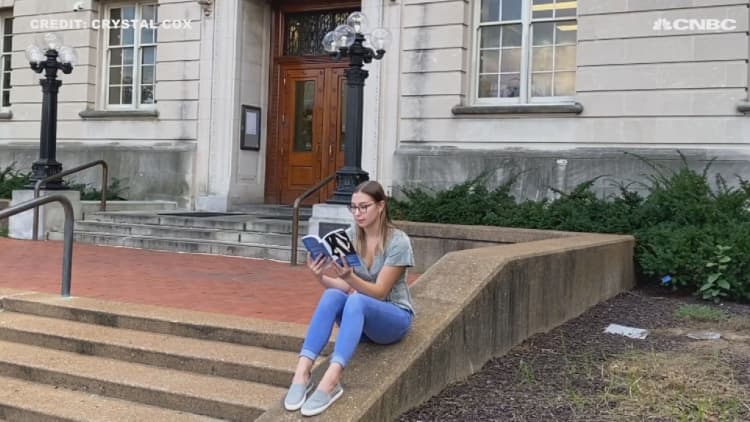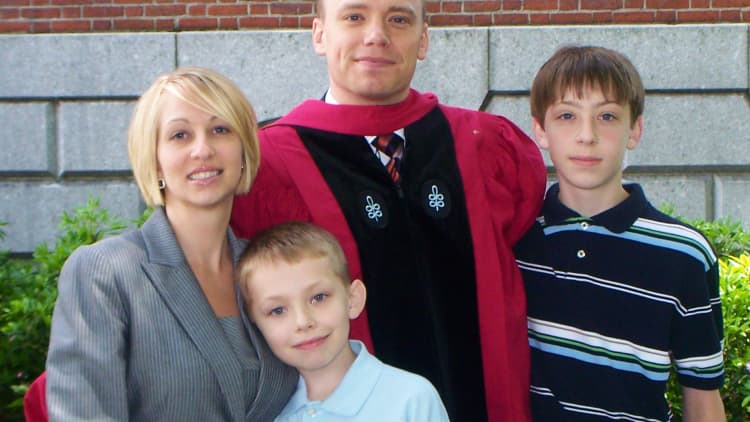Many Americans are still recovering from the 2008 financial crisis. Almost everyone knows someone who lost a job, their retirement savings or even a home in its aftermath. While the effects of the Great Recession were felt throughout the economy, its main cause can be traced back to subprime lending in the mortgage industry.
In the early to mid-2000s, lenders introduced risky products such as zero-down home loans and payment-option adjustable-rate mortgages, which enabled borrowers to take on more debt than they could afford. Lax lending practices led to increased demand and skyrocketing home prices.
When the housing bubble burst and sent home prices plummeting, it set off a chain of defaults that snowballed into a recession. This cautionary tale of risky lending, ballooning debt and market speculation should be a clear warning of looming perils in the student loan industry.
More from Invest in You:
Many college students are in serious financial trouble
Student's choice: Work and eat, or go to class and learn
Working in college may hurt more than help
Higher education is increasingly considered a necessity, and today's young people are often encouraged to borrow to cover the costs. With approximately $1.4 trillion of outstanding debt, student loans are now the second-largest category of household debt in the U.S., trailing only home loans. Many of these loans are guaranteed by the federal government, the largest student lender in the U.S., so all American taxpayers have a stake in this issue.
As tuition and fees continue to increase at both public and private institutions, students' debt loads are rising along with them. Over the past 20 years, college costs have grown at over three times the rate of inflation. The result: 70% of college graduates have student debt, with the average borrower owing more than $37,000 at graduation.

Unfortunately, many students take out student loans without a clear understanding of the consequences. Choosing a college is a major decision, and some parents encourage their children to attend the best school they can, regardless of cost.
Many students aren't worried about taking on debt, reasoning that they'll be able to easily pay it back after they graduate. With readily available student and parent loans, obtaining financing is as easy as filling out a few financial aid forms.
Much like the mortgage industry before the housing crisis, lenders are extending credit to students without fully weighing their ability to repay the debt. This is particularly true with federally-guaranteed Stafford loans.
While some students choose majors that make it more difficult to pay back their loans, others leave school without completing a degree. In fact, approximately 40% of students who pursue a bachelor's degree do not graduate in six years. That percentage is much higher among those who attend private for-profit schools.
Experts believe that student loan defaults have the potential to adversely impact the U.S. economy, which could trigger another recession.Patrick Healeyfounder and president of Caliber Financial Partners
Both nonprofit and for-profit institutions are eager to enroll students, but many borrowers, especially those who leave school without a degree, struggle to find well-paying jobs to pay back their loans. Recent graduates who are unable to obtain work in their fields often enroll in graduate programs, further increasing their debt loads.
The financial impacts last long after students leave school. Many borrowers don't pay off their student loans until they are in their 40s or older, and a significant number never finish paying them off at all. The Brookings Institute estimates that nearly 40% of borrowers who entered college in 2004 may default on their student loans by 2023.
High student debt burdens and defaults on loans affect students' credit scores, thereby making it more difficult to buy a home or get ahead in life. I often use the analogy of having a mortgage without the house.
There's more at risk than just the borrowers' futures. As with home loans before the housing crisis, Wall Street has been speculating on student debt as collateralized loan obligations. Though student loans typically can't be discharged in bankruptcy, betting on any unsecured debt can be a risky investment. Experts believe that student loan defaults have the potential to adversely impact the U.S. economy, which could trigger another recession.
Finding solutions to the imminent student debt crisis requires a multi-faceted approach.
Research supports tightening regulations on for-profit institutions, focusing on degree attainment and promoting income-based repayment options. Colleges and universities can better control tuition costs by taking steps to increase their efficiency, such as embracing shared services.
While governments and institutions need to do their part, students and families should carefully consider their college funding options and weigh the pros and cons of different programs and schools before taking out loans.
— By Patrick Healey, founder and president of Caliber Financial Partners.
CHECK OUT: How to get Costco savings without buying the $60 membership via Grow with Acorns+CNBC.
Disclosure: NBCUniversal and Comcast Ventures are investors in Acorns.






